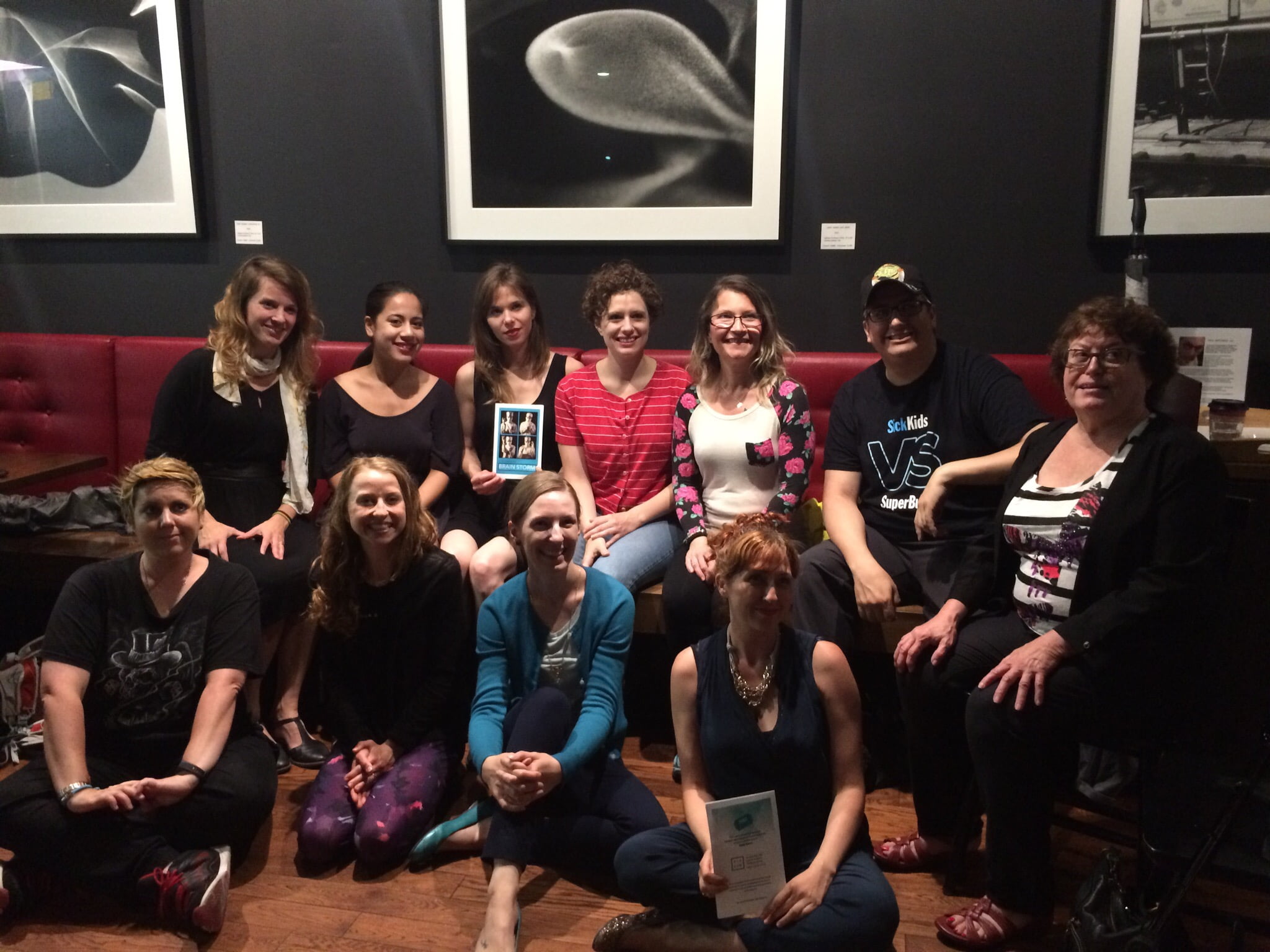Brain Storm. Poetical. Physical. Brain injury brought into movement. So vivid that from the first scene, it triggers before capturing you into the story of a young woman, Kate, who suffered a stroke, underwent a life-saving operation, and is left with a brain injury.
A simple set on the stark black stage greets us: chairs, tables, four old-fashioned hospital screens on wheels. Four actresses play Kate and her friend, Kate’s grannie, spirits, actors, the usual hospital suspects, and most intriguingly, the painfully slow movements of the health care system. The set and the actresses interplay in continual moves that confine, open, block, obstruct, remember, arrest, emote, accept.
I hadn’t remembered what the story was about; I figured it would be a straight telling of a person with brain injury. It was, and it wasn’t. Poetical movements and rising and falling sound evoked lying confined and alone in the horrifying beat of the MRI. Elegant dances of arms and fingers, of balletic pushing down on Kate’s arm evoked the vision tests, hearing tests, strength tests we in the audience with brain injury had undergone too many times in cold doctors’ offices. They triggered several of us from BIST who were attending a special relaxed performance. It was relaxed in that people could leave for the bathroom and return if they needed to and the sound and light cues were dialled down. In other words, they made the 56-minute play enjoyable for an audience of people with short attention spans, sensory overload, and bad memories. A rare gift.
The café scene was particularly memorable for the audience. When Kate’s friend began to speak gibberish, I almost gasped. I hadn’t known this happened to other people with brain injury too. One moment your friend is speaking English, the next their words are gibberish, and you don’t know how long that will last. You only hope it’ll end soon! Mere words don’t convey that experience; the play brought it into the spotlight. As Kate struggles to comprehend her friend, we the audience experience her internal dizziness, her sensory overload, her brain’s inability to process language, and her horror at what is happening in what is supposed to be a relaxed get-together over tea with her friend.
My only quibble was the first transition from what was happening to Kate in the now to Kate returning in memory to a time with her grandmother. It was awhile before I understood what her grandmother was doing and that the scene was a memory. I also found the transition from “reality” to the play within the play hard to follow. But I absolutely loved the spiritual questions about mind and brain and the lines about art being surgery. I’m going to be chewing on that idea for a bit.
Before my brain injury, I attended Stratford, operas in Toronto and New York, musicals, small theatrical productions, mega productions, and even a 17th century play. With its superb acting, its innovative use of movement to simulate health care, its creative sound effects, and its excellent writing and talented direction, Brain Storm belongs in that echelon of the best plays I’ve seen in my lifetime. Lucid Ludic — the cast of Hayley Carr, Maïza Dubhé, Alexandra Montagnese, and Shayna Virginillo as Kate under the direction of Taliesin McEnaney — deserved the sustained applause at the end of the play. Thank you to BIST (Brain Injury Society of Toronto) and PIA Law for sponsoring members’ afternoon out to see Brain Storm. My mother and I are so glad we went!
The last performance for Fringe Toronto 2017 is at Theatre Passe Muraille, 16 Ryerson Avenue, near Queen and Bathurst, on Saturday, July 15 at 7:00 pm. Go see it.





